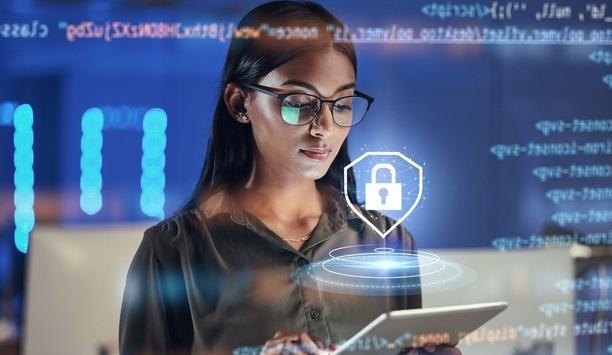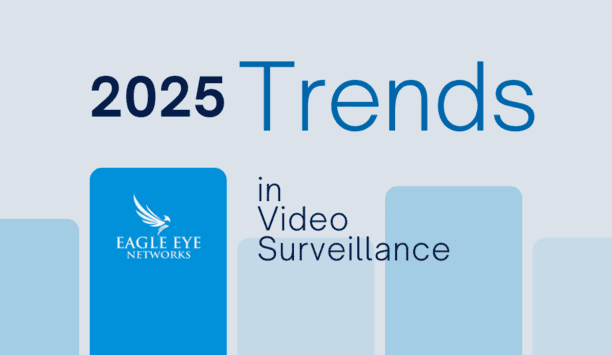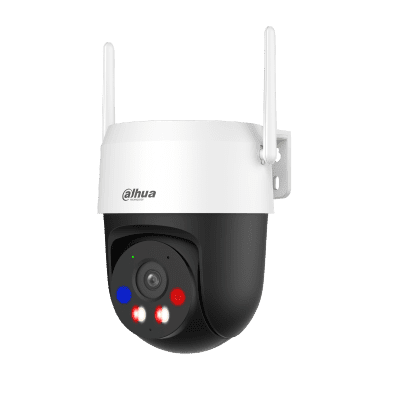What is the expanding role of audio in today's physical security systems?
Editor Introduction
Audio might detect sounds like breaking glass or footsteps before a person even enters the field-of-view of a video camera. Audio also helps to provide context: Someone running in a video image might be suspicious, but the situation is different if they are yelling for help. Furthermore, audio enables operators to talk remotely to people on site, which can deter crime, de-escalate situations, or gather information. And yet, optimising audio is often an overlooked aspect of physical security system design. We asked this week's Expert Panel Roundtable: What is the expanding role of audio in today's physical security systems?
Audio plays an increasingly diverse role in modern physical security deployments. As an input, audio detection analytics can play an important part in verifying an event has taken place, such as a glass break sensor that accompanies AI-based human detection. As an output, automated audio announcements can be triggered when people are loitering in an area after hours or when shoplifting is suspected within a retail environment. When linked to live interactive monitoring, audio becomes an even more powerful tool to address unique security challenges. Digital audio systems allow a mix of live and recorded messaging options to create a remote onsite presence, effectively deterring criminal activity or positively affecting homeless population management. A live voice confirms a human presence, a person-to-person interaction that can’t be ignored, with the added potential of escalated warnings, first responder dispatch, or just a confirmation that all is safe and secure.
Effective communication is an integral part of a strong physical security strategy. Communication systems and devices are no longer accessories to a security system. They now serve an important role in helping teams safeguard against threats, effectively manage incidents, and coordinate the appropriate response depending on the situation. Organisations are embracing the latest advancements in audio technology to bolster their physical security infrastructure. From the seamless integration of communication channels to the unification of audio with video and access control, modern security systems should include audio as part of a comprehensive approach. In this dynamic landscape, innovative communications systems are empowering organisations to navigate threats with agility and collaborate effectively in a spontaneous, or sometimes even fully automated, manner.
Audio redefines how users connect and engage with video surveillance systems, helping stakeholders ensure the safety of employees, protect assets, streamline business operations, and achieve more comprehensive coverage by seeing and hearing what's happening. Audio capabilities within video surveillance systems allow users to detect suspicious sounds or unusual activities, such as footsteps or breaking glass, in order to identify potential intrusions. During an intrusion, security personnel can use live audio to issue warnings or instructions, deter intruders, and prevent security breaches. For organisations with secure safety zones or strict safety compliance, this feature enables personnel to issue safety warnings or provide real-time safety compliance advice, proactively avoiding unsafe situations. During emergencies, live audio capabilities can broadcast announcements, provide instructions, or calm crowds, thus contributing to public safety.
Audio is able to play an expanded role thanks to advancements in AI-powered audio analytics and audio deterrents, both of which help to provide better protection, support faster incident response, and open up opportunities for business optimisation. Audio analytics that leverage AI can now detect specific sounds like breaking glass, aggression, and coughing, enabling quicker, more efficient incident detection and response. This technology enhances situational awareness by providing critical auditory information that complements video surveillance and analytics. When incidents are detected, audio deterrents can then be deployed as a first line of defence to de-escalate or even prevent unwanted activity from occurring. These could be pre-recorded event-specific warnings or live announcements, which actively discourage intruders and unauthorised activities when suspicious incidents like loitering or shouting are detected. These systems not only improve security by enabling proactive measures, but also create a more responsive and adaptive security environment overall.
Audio is significantly impacting overall safety and more informed responses. Businesses can leverage security technologies to proactively prevent incidents by integrating live audio interventions with advanced video monitoring and AI technology. Tailored live audio warnings can immediately deter potential intruders and de-escalate situations before they become more serious. With AI, human intervention is the most effective way to implement audio to deter crimes. Recorded messages quickly become irrelevant, but skilled personnel with the ability to deliver clear live, personal, and descriptive audio messages is the best way to deter crime and proactively prevent losses.
Cameras give the benefit of sight at a location. Audio allows remote operators to interact with a developing situation at those camera locations. The combination of cameras and audio, and specifically two-way audio, is a very powerful way of giving remote security guards the ability to secure a site without physically being present at that site.
The rise of IP audio is fast and is impacting use cases far beyond simple public address and deterrence applications. Sometimes we forget that audio is not only about speakers but also microphones, which can generate data about the information it has collected. Just like video analytics provides an analysis of video data, audio analytics can identify specific sounds, qualities, audio signatures, and other information that can be used by security operators for more efficient crime prevention and forensics. This can be useful in perimeter protection applications as well as a host of other non-security-related business intelligence applications that fall outside of security’s traditional scope.
In the world of video surveillance, the value of audio is often underestimated. While audio plays a pivotal role in intercom systems, its significance in broader security and event management contexts is frequently overlooked. In-camera or edge-processed audio analytics that detect gunshots, yells, glass breaks, and vehicle horns don’t require the audio to be recorded or captured in any way. This avoids violating privacy laws because the audio is processed instantaneously at the edge and never leaves the camera. If the camera recognises a known sound signature, it simply issues an alert. Audio analytics can also enhance situational awareness in areas where video is not allowed. An analytic that detects glass breaks and yells can prevent a private area from being a complete blind spot. Well-configured audio analytics help validate what operators see on screen, allowing them to accelerate response times while providing detailed insights that go beyond traditional video surveillance.
Audio functionalities can greatly expand and enhance the effectiveness and versatility of security systems. With audio enabled, many security devices can become real-time communication devices to grant site access or provide timely assistance – via products like video intercoms – or deter behaviour. For example, an automatic message is played via speaker when cameras detect loitering or line-crossing events. Audio also improves incident management, adding an extra layer of context when security professionals investigate an incident. For instance, if an employee and an outside individual were involved in an altercation at the entrance of a facility, audio-enabled cameras could capture additional details or information to help law enforcement identify the suspect. It’s important to note that while audio can be helpful, it isn’t appropriate or necessary to include it in every deployment. Pioneers should balance safety benefits with respect for privacy when deciding when and where to deploy audio systems.
Audio plays a crucial role in modern physical security systems, enhancing both real-time threat detection and situational awareness. Additionally, when reviewing event video, audio can provide valuable contextual information to the investigator. Integrated with video surveillance, audio monitoring can enable operators to identify unusual sounds, which may indicate security breaches. These auditory cues enable operators to respond more quickly and appropriately to events. Further, audio analytics can enhance security capabilities by automatically classifying sounds such as gunshots, breaking glass, or raised voices, which can trigger alerts based on pre-set parameters. Additionally, two-way audio systems allow for remote communication, letting security operators issue warnings or provide instructions directly to individuals. The integration of audio into the security system enhances situational awareness and enables more dynamic and effective responses to events occurring at a site, making audio an indispensable part of modern security strategies.
Editor Summary
Factors such as placement of microphones, managing background noise, deployment of audio analytics, and addressing privacy concerns are among the challenges to integrators seeking to include audio as part of a physical security system. However, as our Expert Panellists point out, the benefits of audio are manifold, and audio technology is sometimes an underappreciated element in today's security systems. To make systems better at protecting people, assets and facilities, industry professionals would do well to "listen up."
- Related links
- Axis Communications Power supplies & batteries
- Axis Communications CCTV software
- Genetec CCTV software
- Salient Systems CCTV software
- Verkada CCTV software
- Verkada Power supplies & batteries
- Axis Communications Video servers (IP transmission)
- Salient Systems Video servers (IP transmission)
- Axis Communications Storage
- Detection Software CCTV software
- IP Surveillance Software CCTV software
- Management Software CCTV software
- Recording Software CCTV software
- Monitoring Software CCTV software
- Surveillance Software CCTV software
Expert commentary
A modern guide to data loss prevention
Download7 proven solutions for law enforcement key control and asset management
DownloadSecurity practices for hotels
Download2025 Trends in video surveillance
DownloadMaximising security and performance
DownloadDahua P3AS-PV 3MP Outdoor Wi-Fi PTZ Camera with Active Defense
Climax Mobile Lite: Advanced Personal Emergency Response System (PERS)
Hanwha Vision 4CH AI Multi-sensor Camera with WAVE VMS

























